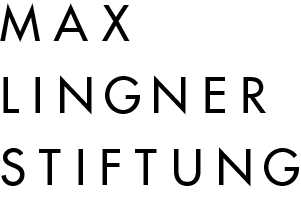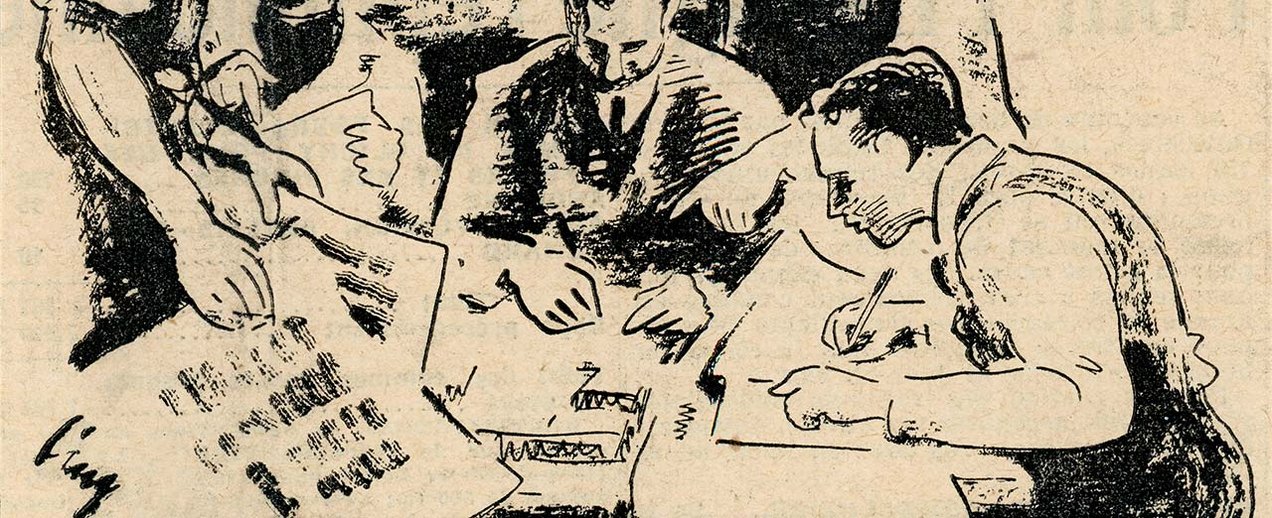Research
In accordance with its statutes, the Max Lingner Foundation is dedicated to researching and communicating the artist's work. In addition to the compilation of the catalog raisonné, this includes above all research into the artistic, cultural-political, medial and other contemporary historical contexts of his work and the work of his fellow artists, as well as the problems of the reception of their art today.
Catalog raisonné
After the presentation of the catalog raisonné of the early years (1898-1931/32) in 2004 and the extensive cultural-historical publication on the late work (1949-1959) in 2013, the current focus of the Foundation's interest is primarily on the French phase (1929-1949) of the artist Max Lingner.
We need your help
In order to complete or update the list of Lingner's works created in France, it is particularly important to also obtain information about works by Lingner that are privately owned. In the course of his life, Lingner sold a large number of paintings and drawings and also them away to colleagues, friends and political companions. If you yourself own a work by Lingner, we would be very grateful for your information. Please do not hesitate to contact us. We are primarily interested in recording the works and documenting them photographically, but we are also interested in their history and in the stories you can tell us about them.
Cooperation with the Academy of Arts, Berlin
In 2010, the Max Lingner Foundation organized the 1st Max Lingner Colloquium in cooperation with the Akademie der Künste. Titled “... Come and Work with Us on the Newspaper MONDE.” Nine scholars contributed with their lectures to look at the world of the Parisian Weekly MONDE (1928-1935) journal with regard to its publishers and editorial board members, the published articles, the internal and external political conflicts and contradictions, the artistic design, as well as to classify it in terms of media history and socio-politics.
The lectures were published in 2012 in the publication The World of the Paris Weekly MONDE (1928–1935)
Veranstaltungsprogramm im Max-Lingner-Haus, Berlin
2016/17 hat die Stiftung ihre Vortragsreihe im Max-Lingner-Haus auf Lingner in Frankreich ausgerichtet: Expertinnen aus Paris, wie Rosi Huhn, Hélène Roussel und Ines Rotermund-Reynard stellten ebenso ihre Forschungsergebnisse vor wie die deutschen Kolleg*innen Maria Obenaus, Lisa Hartsch, Martin Groh und Angelika Weißbach.
Kooperation mit dem Centre Marc Bloch, Berlin
Seit 2018 gibt es eine Kooperation zwischen dem Centre Marc Bloch und der Max-Lingner-Stiftung, um die Rolle und Bedeutung Max Lingners in Frankreich besser einordnen sowie Perspektiven für weitere Forschungen zu diesem Thema aufzeigen zu können.
Nach einer ersten Zusammenarbeit mit Markus Messling und Franck Hofmann unter dem Motto «Realismus!» und der Umsetzung des Ausstellungsprojektes «Max Lingner – auf der Suche nach der Gegenwart» in der Galerie des Institut français in Berlin, konzentriert sich die aktuelle Kooperation auf Forschungsperspektiven.
Gemeinsam mit Jakob Vogel, Aurélie Denoyer und assoziierten Forscher*innen des Centre Marc Bloch wird derzeit daran gearbeitet, ein international und interdisziplinär ausgerichtetes Netzwerk aufzubauen, um über Lingner in Frankreich in einer größeren Breite forschen zu können. Nach ersten Arbeitstreffen fand im Januar 2021 ein digitaler Studienvormittag statt, dem weitere digitale oder reale Treffen folgen sollen. Langfristiges Ziel ist, eine Publikation zu Lingner in Frankreich herauszugeben.
Kooperation mit dem Musée de l’Histoire vivante, Montreuil
Eine weiterer Kooperationspartner ist das französische Musée de l’Histoire vivante in Montreuil bei Paris. Dank dieser Zusammenarbeit konnte die Ausstellung «Max Lingner. À la recherche du temps présent» von März bis Juli 2020 in Montreuil gezeigt werden. Zudem sollte eine gemeinsame Veranstaltung stattfinden, die wegen der Corona-Pandemie aber abgesagt werden mußte. In Zukunft wird die Stiftung ein Projekt unterstützen, bei dem Zeitschriften wie MONDE und Tageszeitungen der 1930er Jahre aus dem Bestand des Museums digital erfasst werden.

